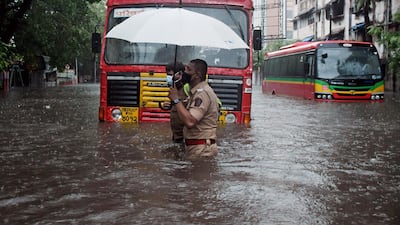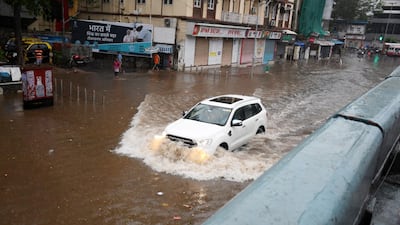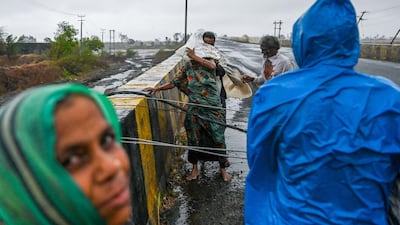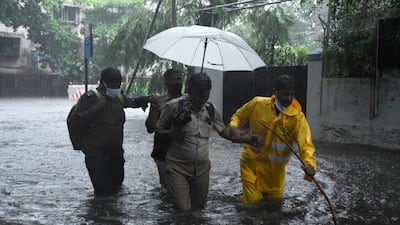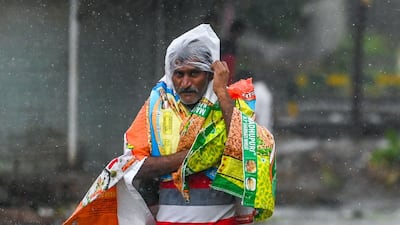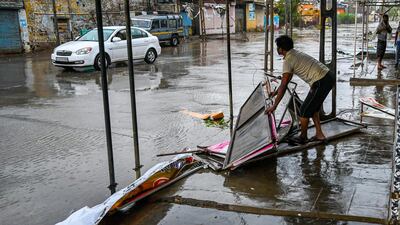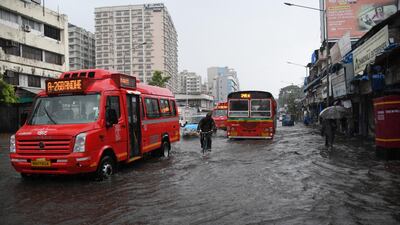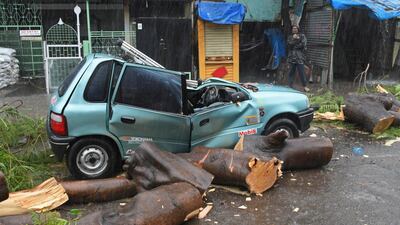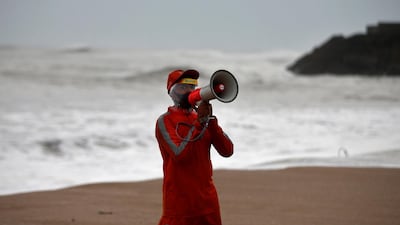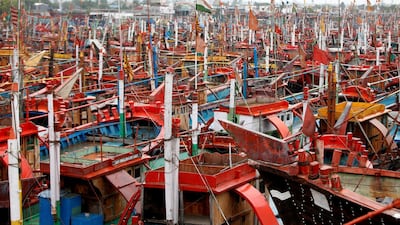The Indian navy was working to rescue crew members from a sunken barge and cargo ship adrift on Tuesday off the coast of Mumbai following a deadly cyclone.
The navy said it rescued 177 of 400 people aboard the vessels.
Maritime patrol aircraft, helicopters and three warships joined the rescue operations.
Both barges were working for Oil and Natural Gas Corp., the largest such company in India.
Cyclone Tauktae, the most powerful storm to hit the region in more than two decades, packed winds of up to 210 kilometres per hour when it reached the shores of Gujarat on Monday.
Four people were killed, raising the death toll from the storm to 16.
Residents emerged from relief shelters to find debris strewn across roads, trees uprooted and electricity lines damaged.
In Maharashtra, six people were killed on Monday but the state’s capital, Mumbai, was largely spared major damage.
At the weekend, the cyclone killed six people in Kerala, Karnataka and Goa states as it moved along the western coast.
In areas along the western coast, four people were killed and 73 villages badly damaged, according to the southwestern Karnataka state’s disaster management authority.
The cyclone had weakened, but the India Meteorological Department forecasts heavy rain for many parts of Gujarat and Maharashtra in the coming days.
India's west coast is no stranger to devastating cyclones, but changing climate patterns have caused them to become more intense.
Tropical cyclones are less common in the Arabian Sea than on India’s east coast and usually form later in the year.
The tropical cyclones will form quicker and become more frequent in the Arabian Sea because of climate change, Dr Roxy Mathew Koll, a climate scientist at the Indian Institute of Tropical Meteorology in Pune, said.
The Arabian Sea was experiencing some of the fastest warming of all tropical basins, areas where cyclones form, he explained.
"Cyclones draw their energy from the ocean," Dr Koll told The National.
“The warming has provided that energy for the cyclones to form, which is why we’re seeing much more activity in the western coast of India.
“It’s not just cyclones, but rainfall. Extreme rainfall, of 150 millimetres a day, is increasing in the western coast because of the growing activity and convection in the Arabian Sea.”
Before the cyclone, about 150,000 people were moved from low-lying areas in Maharashtra and Gujarat.
Both states, already among the hardest hit by the coronavirus pandemic, scrambled disaster response teams, fearing the storm could endanger India's fight against Covid-19, with supply lines cut and roads destroyed.
Damage from the storm is also likely to hurt the poor, who are already stretched as a result of the coronavirus.
The South Asia head of the International Federation of Red Cross and Red Crescent Societies, Udaya Regmi, said the cyclone is a “terrible double blow” for families that have already been hit by Covid-19 infections and deaths.
“The potential impacts of Cyclone Tauktae are frightening as this monster storm threatens the state of Gujarat. Every effort must continue to keep people safe from this dangerous storm and the raging pandemic,” he said.
